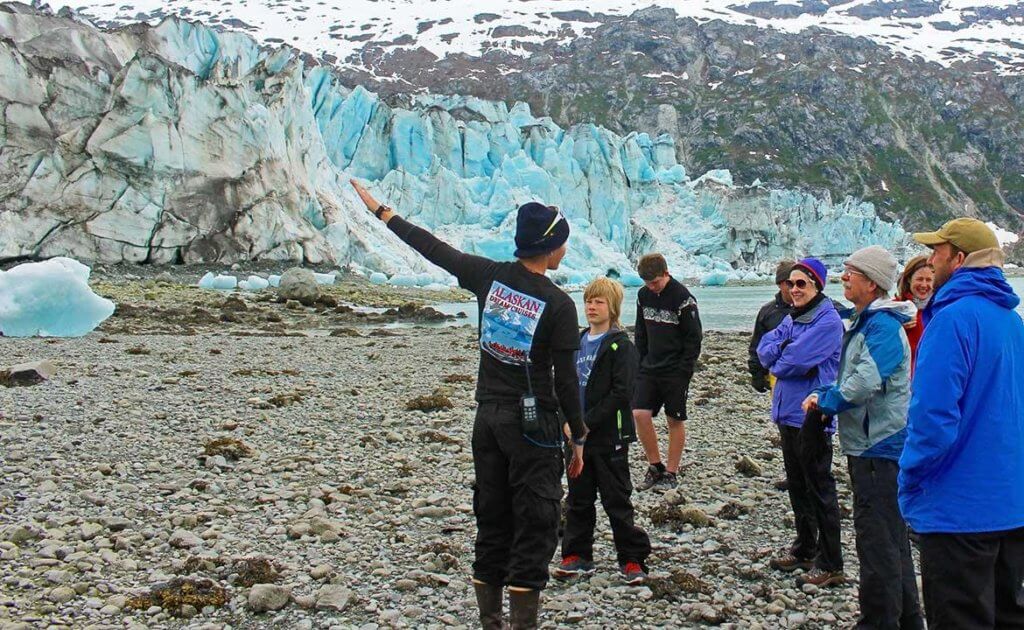Glacier Bay National Park
Tidewater glaciers, stunning landscapes, and abundant wildlife
When Captain George Vancouver sailed the ice-choked waters of Icy Strait in 1794, Glacier Bay as we now know it did not yet exist. Instead a single, massive wall of ice, thousands of feet thick, rested in the vicinity of present-day Bartlett Cove. When the famed naturalist John Muir visited the area in 1879, the ice had made a twenty-mile retreat from where it stood at the time of Vancouver’s visit.
Today, the bay now extends 65-miles, contains eight tidewater glaciers, and provides pristine habitat for a wide-array of wildlife, including both brown and black bears, wolves, mountain goats, Steller sea lions and humpback whales.
As we venture through this stunning National Park you will see the profound power glaciers have in shaping even the most rugged landscapes. You will also witness the intriguing phenomenon of plant succession as the towering hemlocks and spruces at the mouth of the bay become alders, willows, and mosses in newly exposed areas.

For many, the crowning jewel of Glacier Bay National Park is the stunning Marjerie Glacier. This 21-mile long glacier is over a mile wide at the face and has become world-renowned for its dramatic calving displays. The sound created from such events is often described as “white thunder.”
In Glacier Bay, a Hoonah Tlingit Cultural Heritage Guide will join us. This guide will tell local stories and provide information regarding the area’s original native inhabitants, including their special connection to the land that provided sustenance for their people for thousands of years. A National Park Ranger, who will further expound upon the natural history and wildlife of the Park, will also join us.

